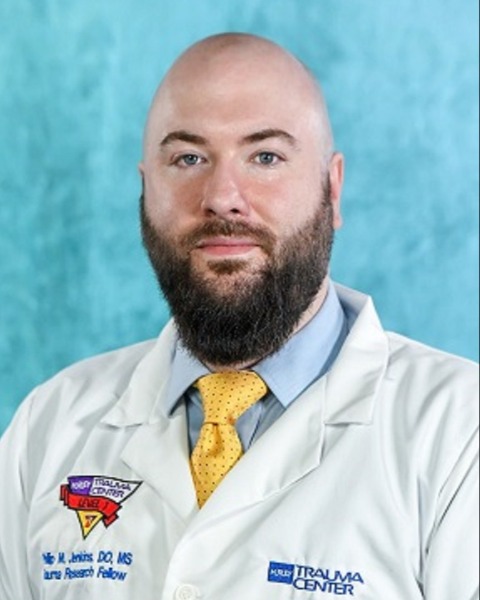Novel TraumaGuard Catheter to Measure Continuous Intra-Abdominal Pressure
-

Phillip Jenkins, DO, MS,
Trauma Research Fellow
Hurley Medical Center
Flint, MIDisclosure information not submitted.
-
PB
Patrick Beer, DO
Trauma Surgeon
Hurley Medical Center, United StatesDisclosure information not submitted.
-
JC
James Cranford, PhD
Associate Research Scientist
Hurley Medical Center, United StatesDisclosure information not submitted.
-
GS
Gul Sachwani-Daswani, DO, FACOS
Trauma Surgeon, Director of Pediatric Trauma, Director of Trauma Research
Hurley Medical Center, United StatesDisclosure information not submitted.
-
DK
Dean Kristl, MD
Trauma Surgeon
Hurley Medical Center, United StatesDisclosure information not submitted.
-
KW
Kristoffer Wong, DO
Trauma Surgeon, Director of Burn, Director of Hernia Center of Excellence
Hurley Medical Center, United StatesDisclosure information not submitted.
-
LR
Lindsey Rieck, DO
Trauma Surgeon
Hurley Medical Center, United StatesDisclosure information not submitted.
-
DS
Donald Scholten, MD, FACS
Trauma Surgeon
Hurley Medical Center, United StatesDisclosure information not submitted.
-
MJ
Mike Jaggi, DO, FACP, FACEP
Emergency Medicine, Internal Medicine, Chief Medical Officer, Director of Emergency Services
Hurley Medical Center, United StatesDisclosure information not submitted.
-
LM
Leo Mercer, MD, FACS
Trauma Surgeon, Director of Trauma & Surgical Critical Care
Hurley Medical Center, United StatesDisclosure information not submitted.
First Author(s)
Co-Author(s)
Title: Novel TraumaGuard® Catheter to Measure Continuous Intra-Abdominal Pressure
Introduction: Current techniques for measuring intra-abdominal pressure (IAP) are highly variable and dependent on operator skill and method used. The goal of this study is to validate the accuracy of the TraumaGuard® catheter (TG) to continuously measure IAP via the emptied urinary bladder utilizing a novel reliable air charged system. Current methods require instillation of saline into an indwelling bladder catheter which varies from 50-100 mL depending on patient and institution. The TG is currently being studied on patients undergoing abdominal laparoscopic procedures and severe burn patients with > 30% Total Body Surface Area injuries (TBSA) at an ACS certified Level 1 Trauma/Burn Center in Central Michigan.
Method: This is a case-controlled study performed on qualified individuals admitted for abdominal laparoscopic procedures or burn patients arriving with >30% TBSA. During laparoscopy we simultaneously compare the controlled pressure of the laparoscopic CO2 insufflator to the pressure measured by the TG placed in the bladder to drain urine. Comparative pressure measurements are taken from 0-20 mmHg at 5 mmHg increments in the supine position. The laparoscopic insufflators in the OR setting are set at a maximum of 15-20 mmHg depending on the make and model of the insufflator, ConMed Air Seal iFS (20 mmHG) or Styker (15 mmHG).
Result: Thirty-one data points have been collected consisting of 25% male/75% female subjects aged 20-55 with BMI up to 37. Evaluation of bias and precision was performed using Bland and Altman analysis showing correlation of the TG pressure readings from initial analysis in human subjects via urinary bladder to the laparoscopic pressure insufflator readings. The Lin’s concordance correlation coefficient demonstrates substantial agreement between the measured TG pressures and known insufflator pressures (c=.940; r=.949).
Conclusions: The results confirm that TG via the urinary bladder can continuously and accurately measure IAP induced by a laparoscopic insufflator. The ability to continuously measure pressure in an empty bladder is a novel and unique technology. Further testing of the TG in burn and ICU patients at risk of IAH and ACS is in process. Reliable measurement of IAP in these high risk ICU patients will reduce the associated high morbidity and mortality.
